Abstract
1. In anaesthetized open-chest cats and dogs, blood flow and gas tensions were measured in a circuit inserted into a pulmonary vein while ventilating the lobe which it drained with low O2 and high CO2 mixtures.
2. Both hypoxic and hypercapnic mixtures caused a reduction in blood flow from the lobe.
3. Stimulus—response curves relating blood flow to pulmonary venous PO2 and PCO2 were obtained. Those for hypoxia were usually asymptotic in shape; the curves became steep below 100 torr and flow sometimes fell to zero. The mean reduction in blood flow for every 20 torr fall in PO2 was 15·7% in cats and 11·8% in dogs. Those for hypercapnia were steep at first but levelled out at high PCO2 values; the maximum reduction in flow was 40-60% as vasoconstriction was only observed over a limited PCO2 range.
4. Hypoventilation of the lobe led to a reduction in blood flow. This was mainly attributable to hypoxia though other factors such as hypercapnia may sometimes have contributed.
5. Total occlusion of the bronchus of an O2-filled lobe caused blood flow to fall in two phases. The first phase could be attributed to a rise in PCO2 and the second to a fall in PO2.
6. The results confirm the hypothesis that hypoxia is an important factor regulating local blood flow in relation to local ventilation.
Full text
PDF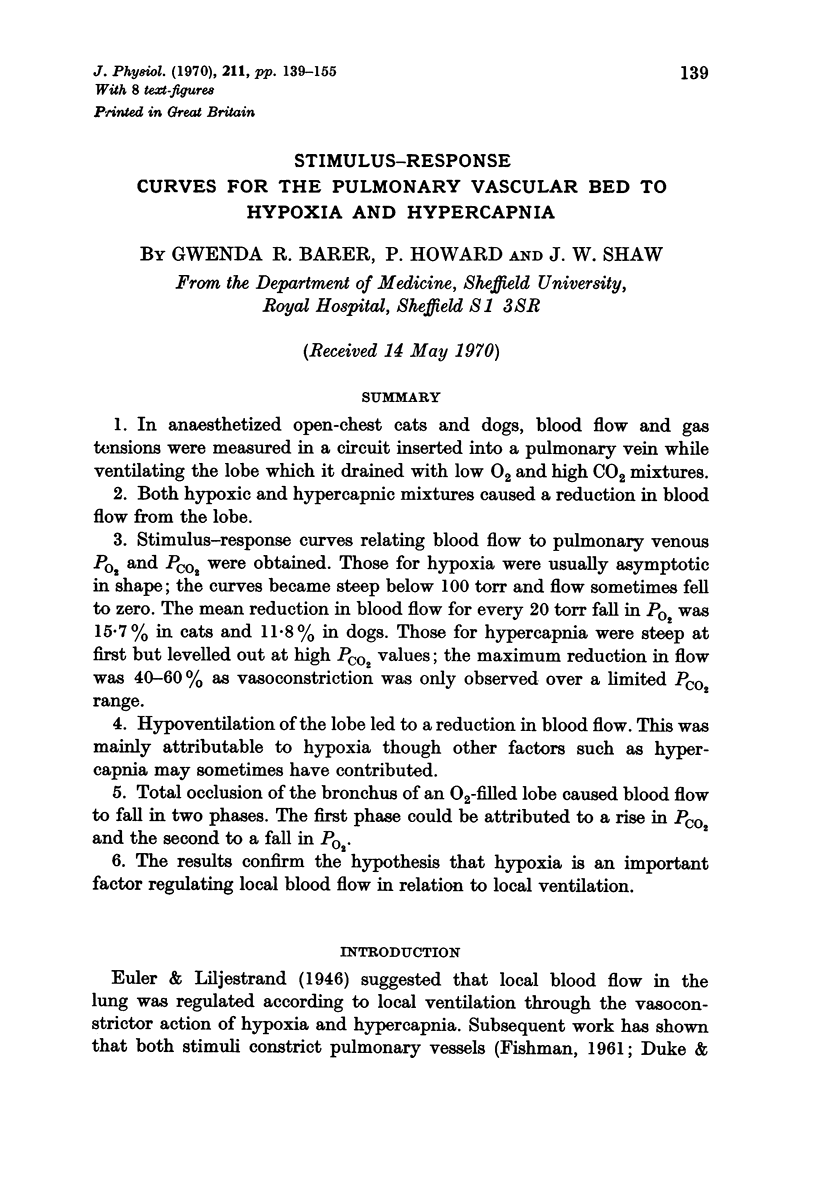
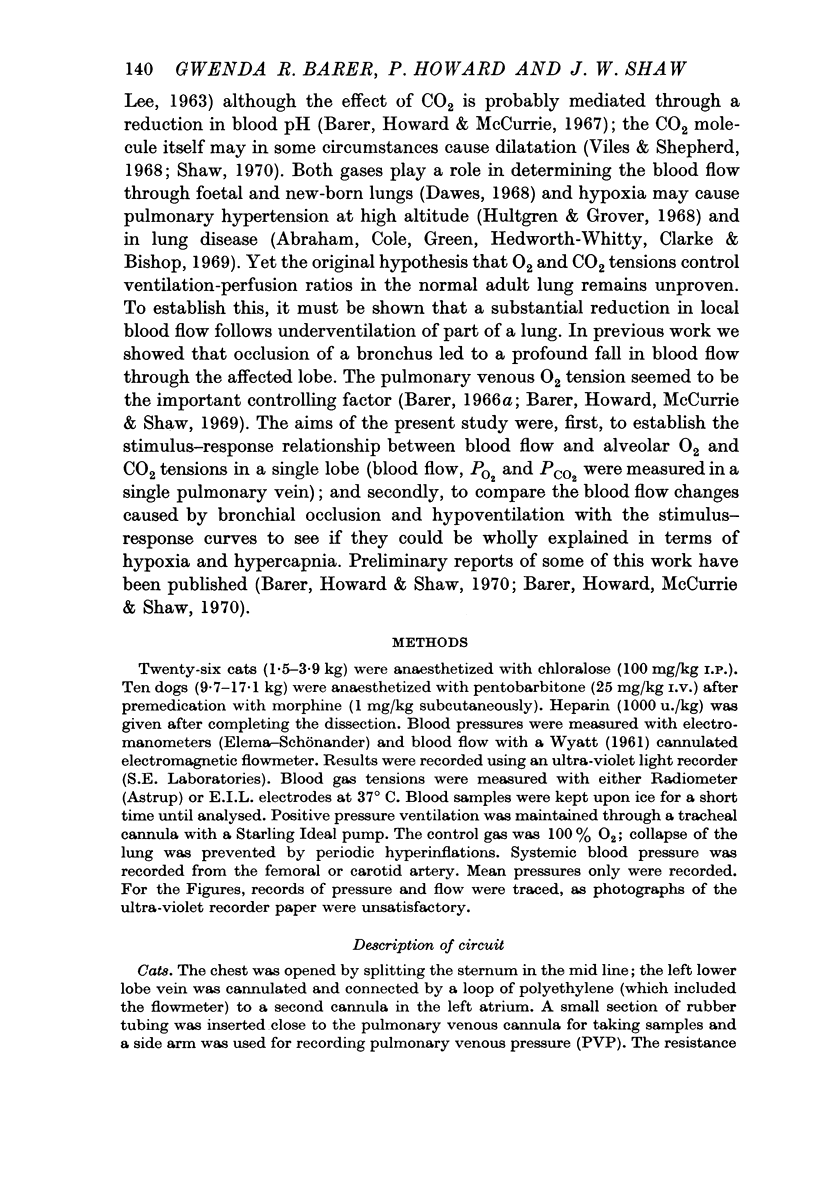
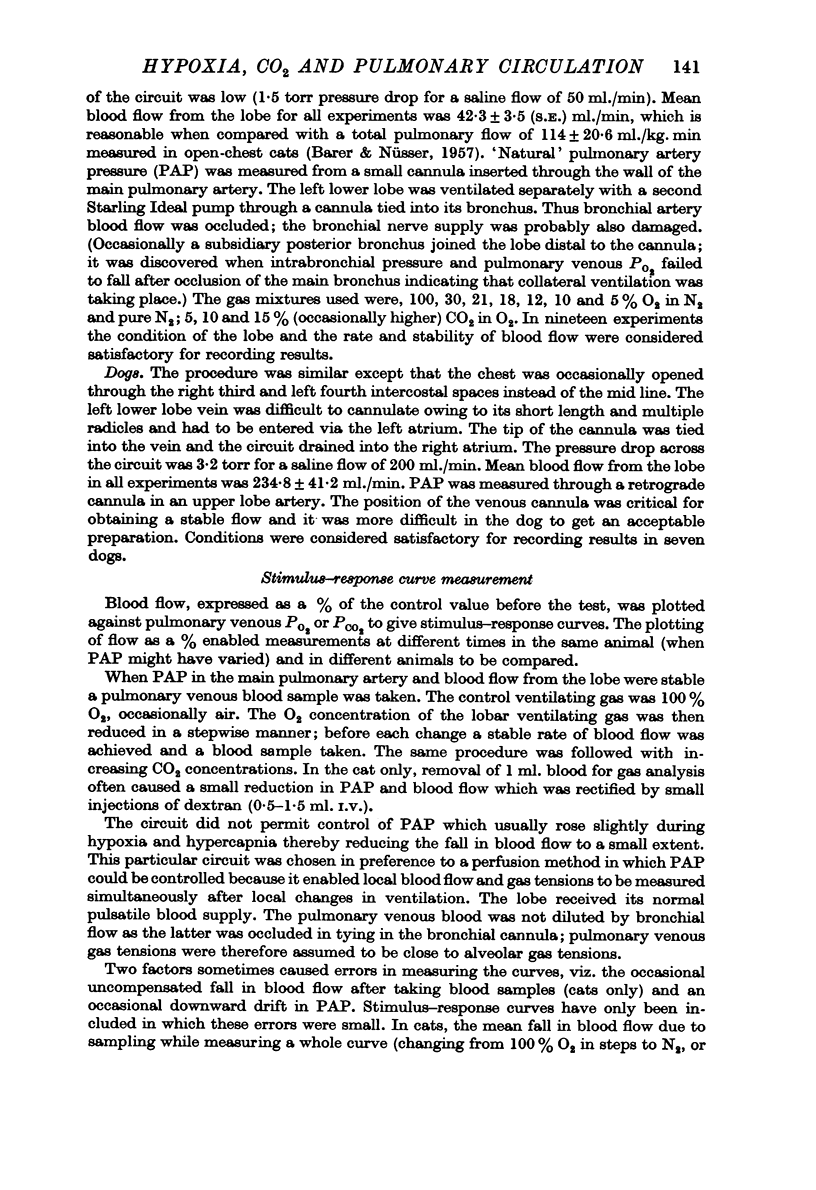
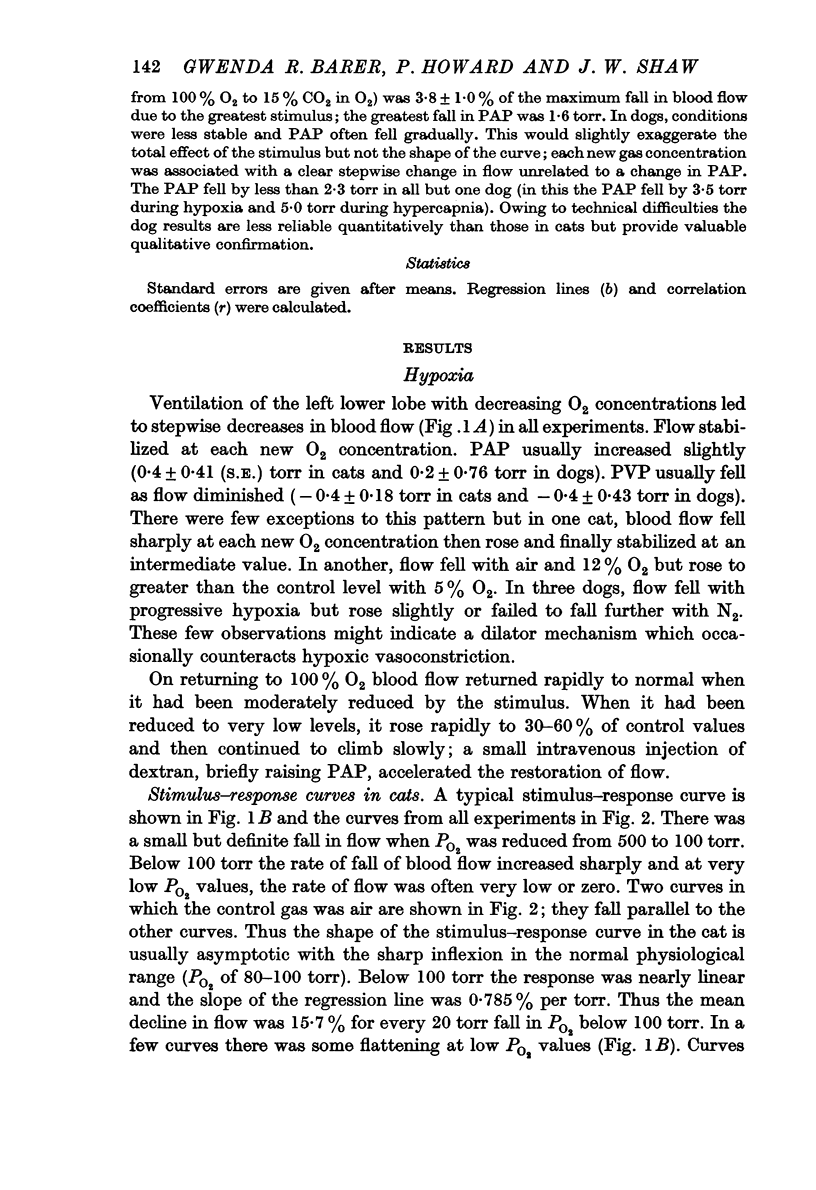
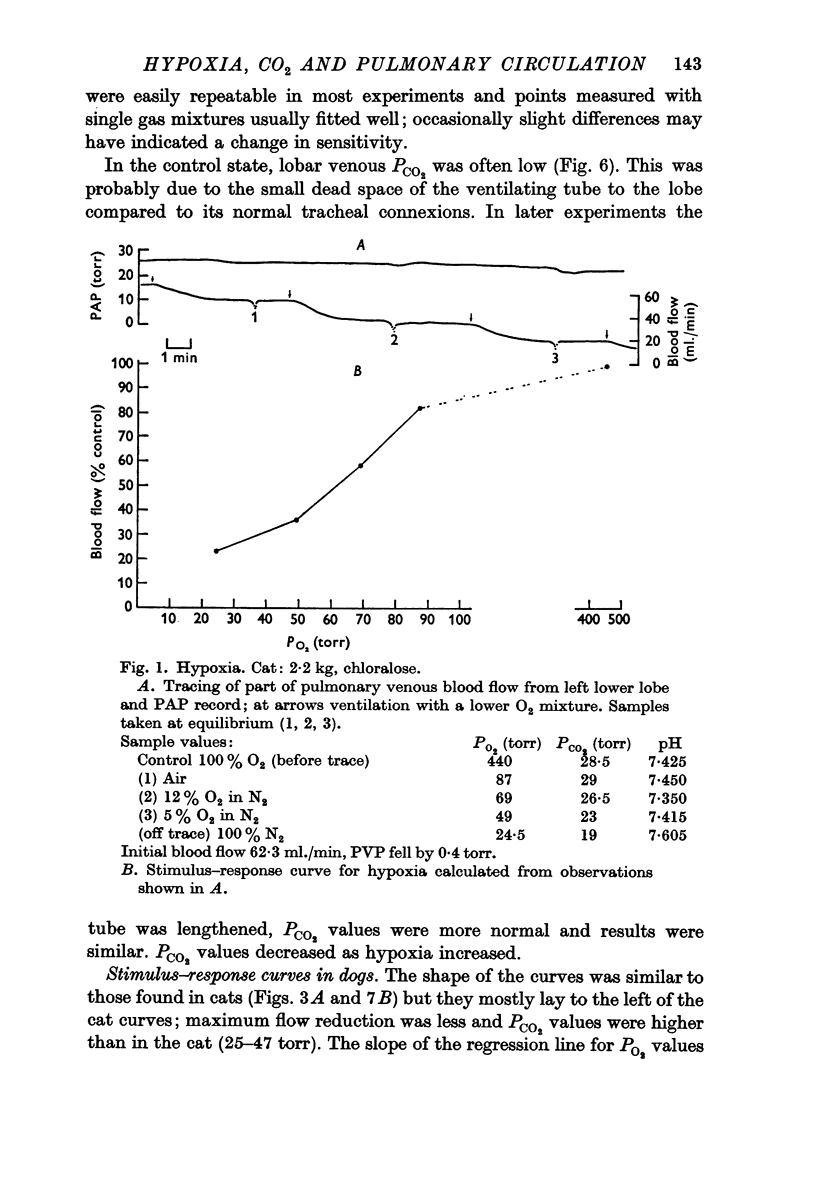
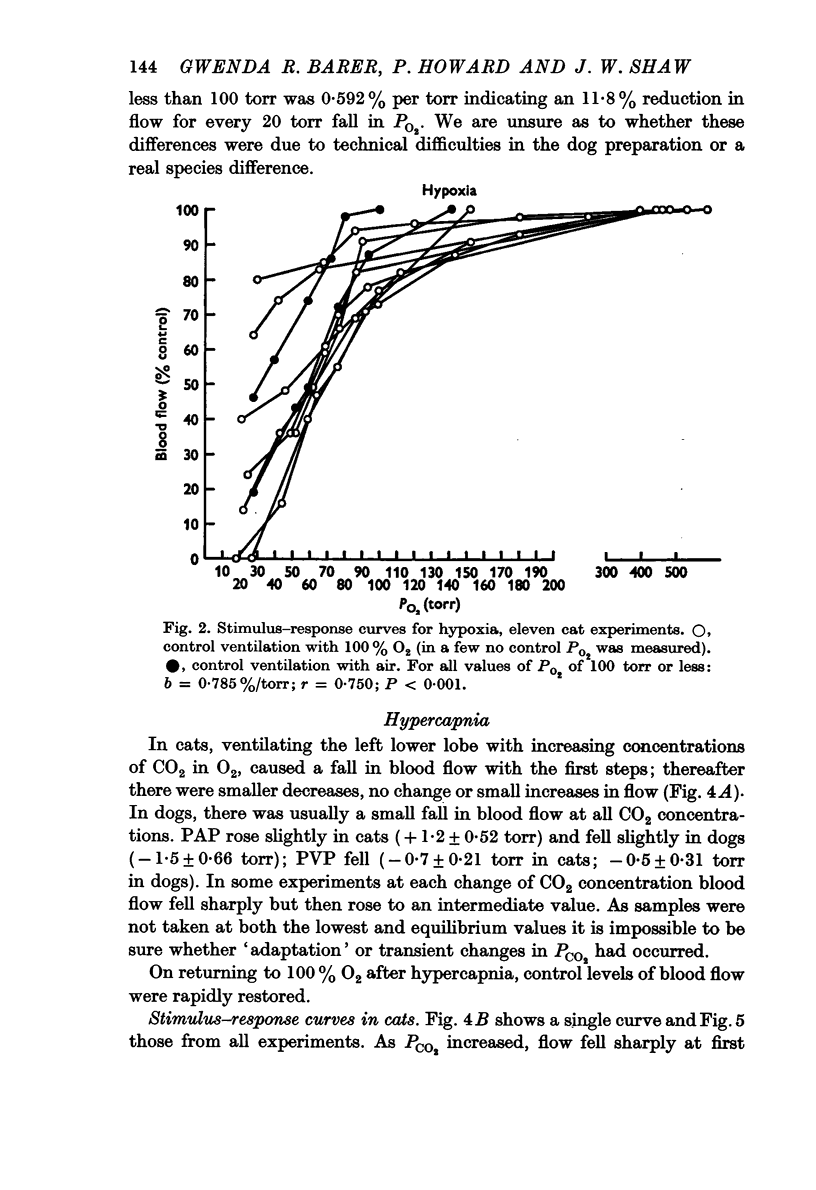
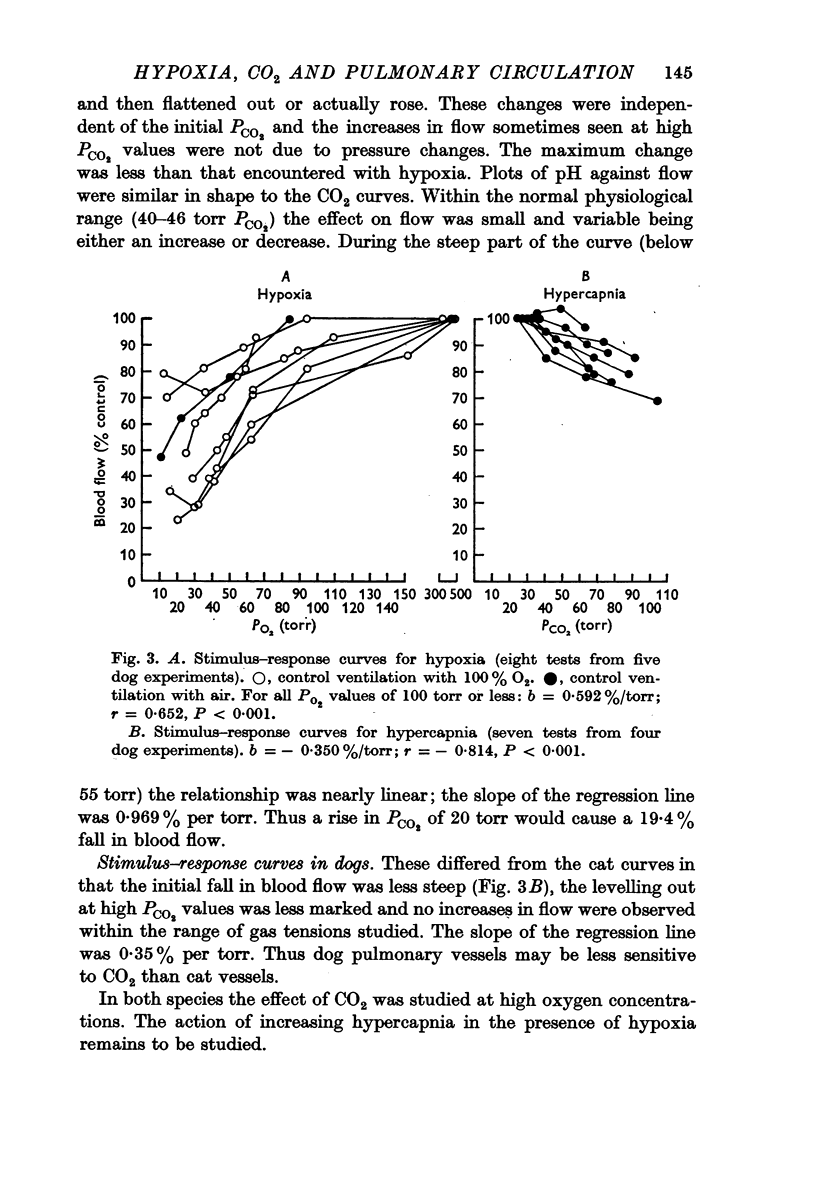
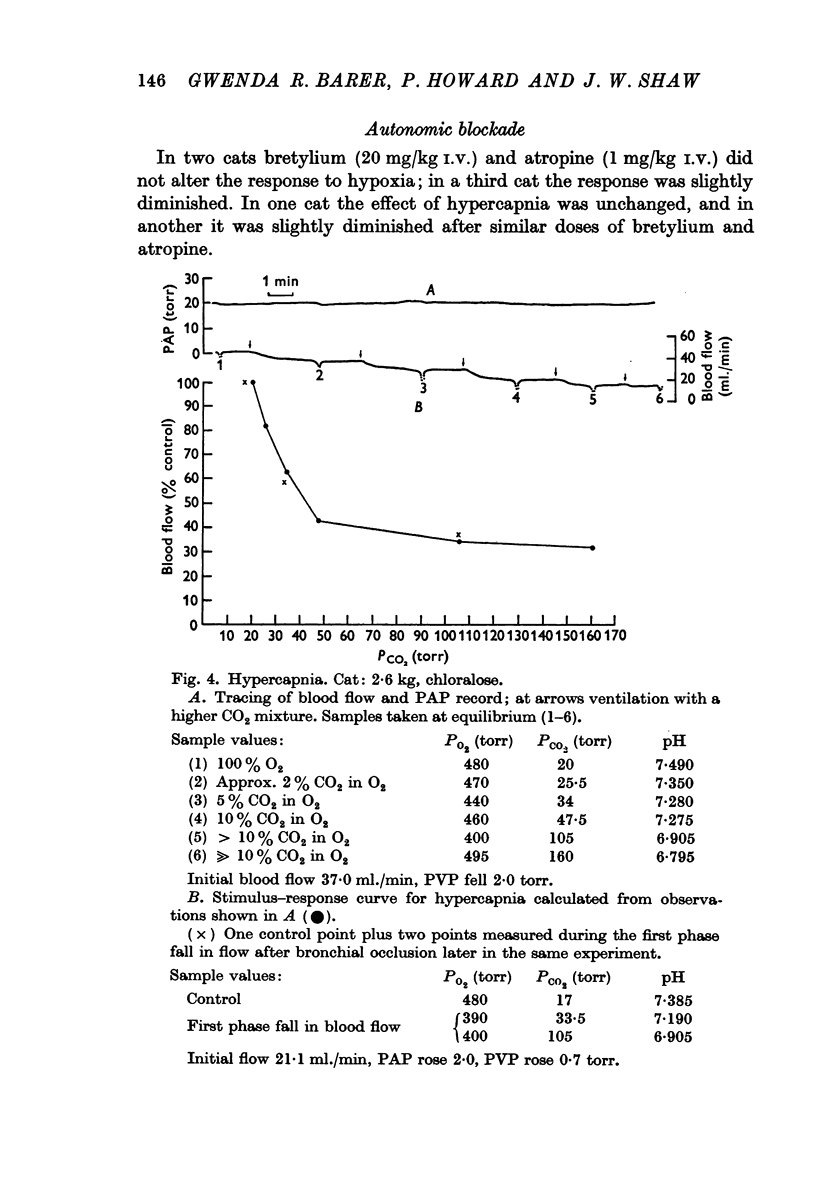
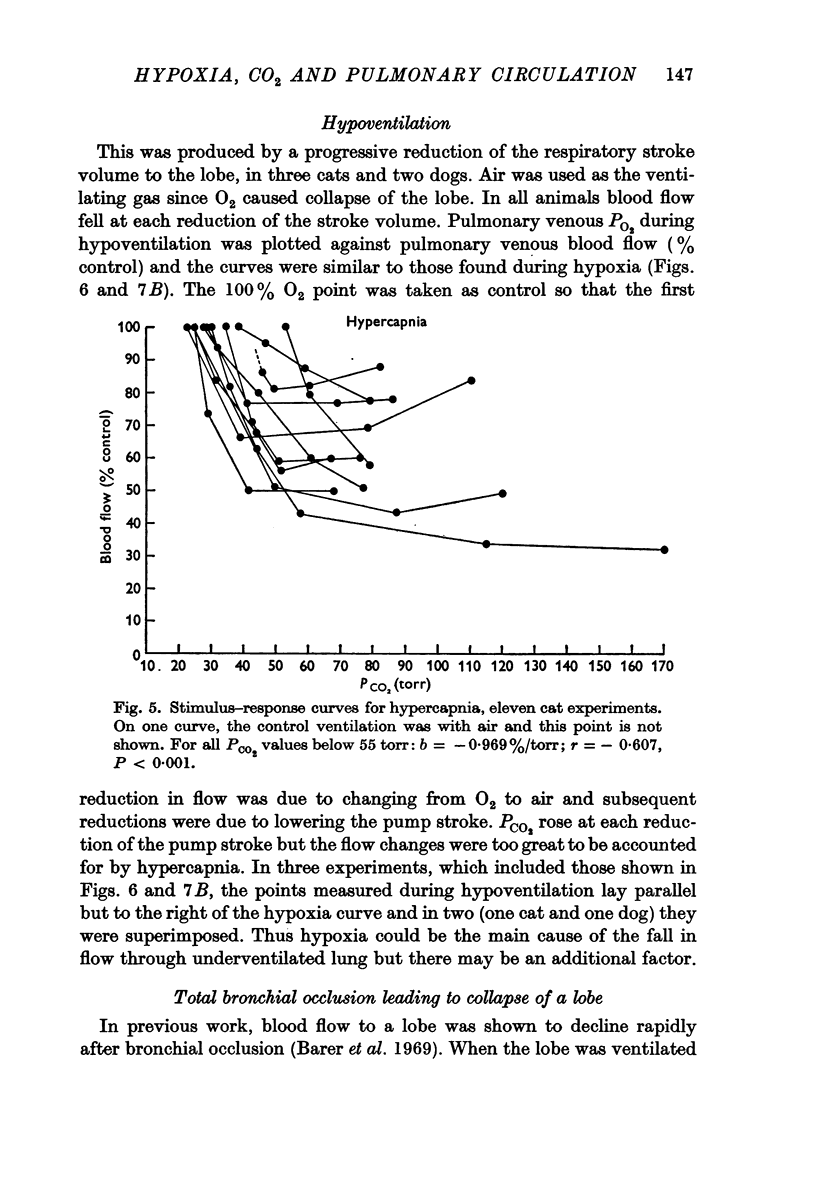
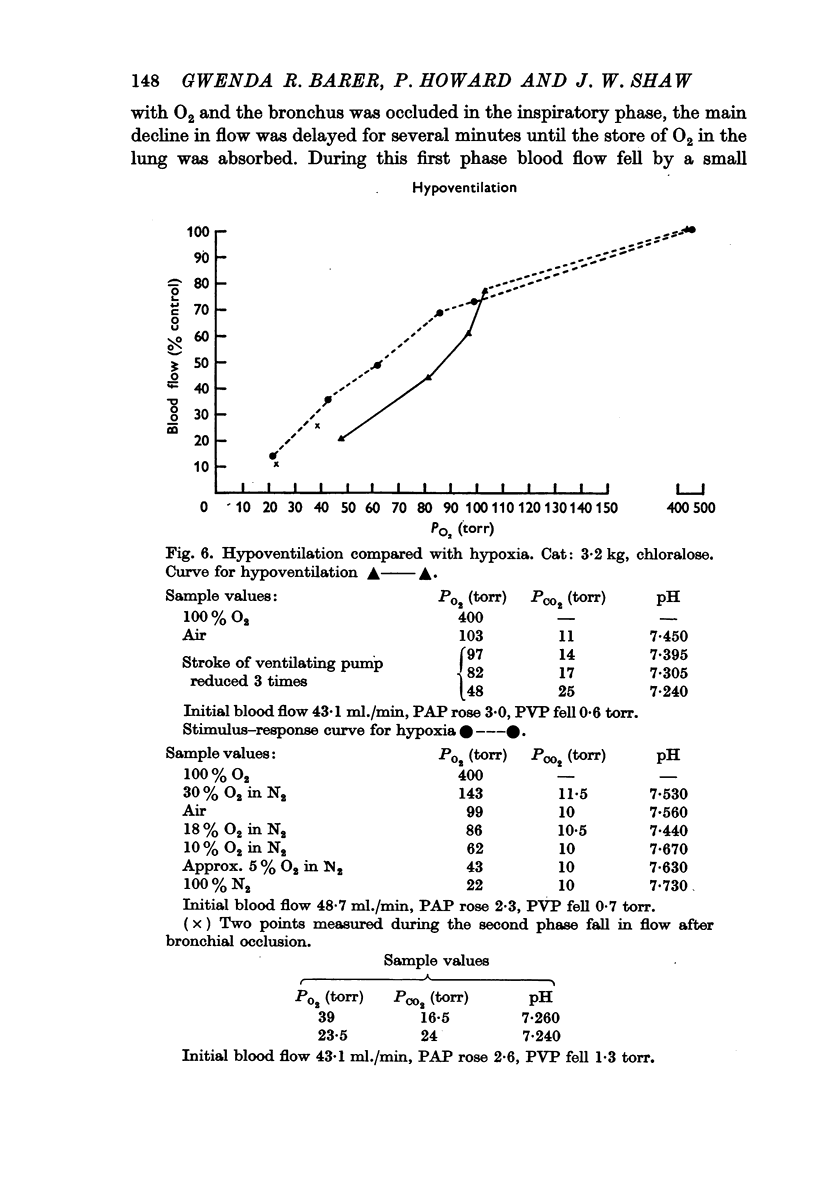
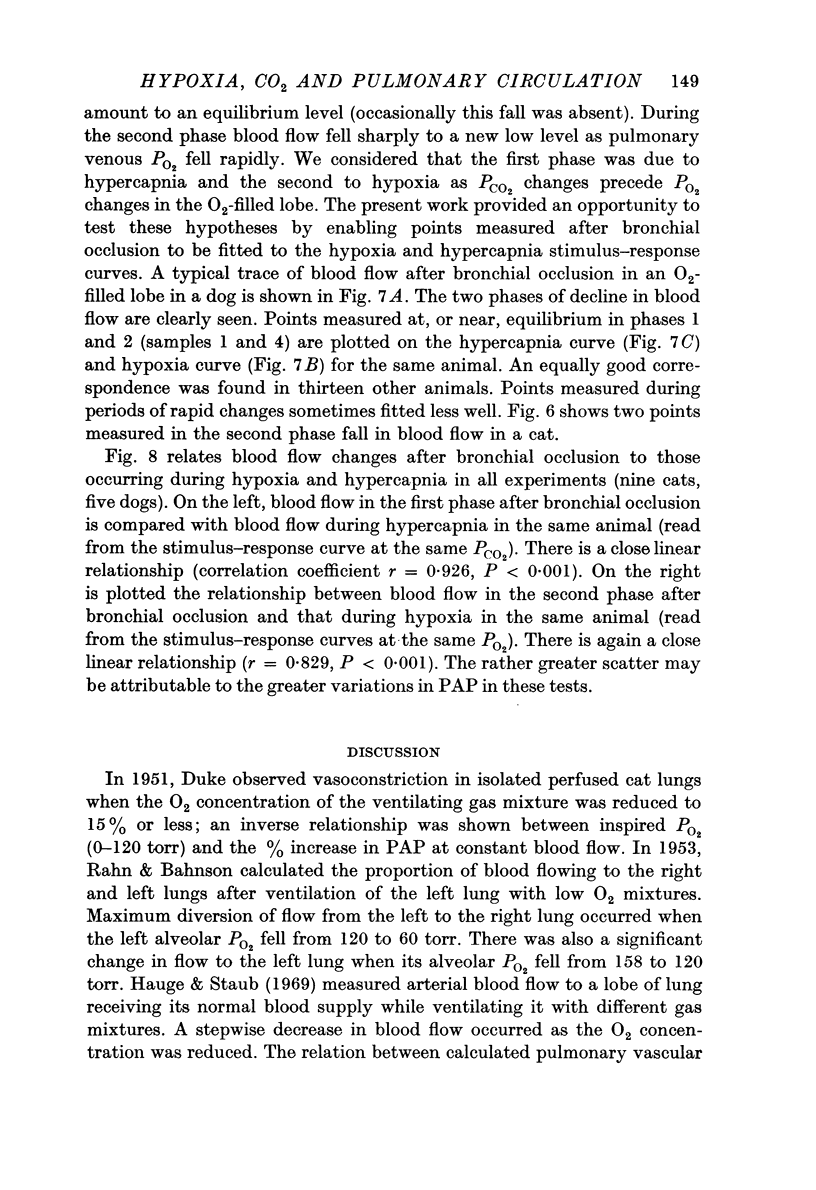


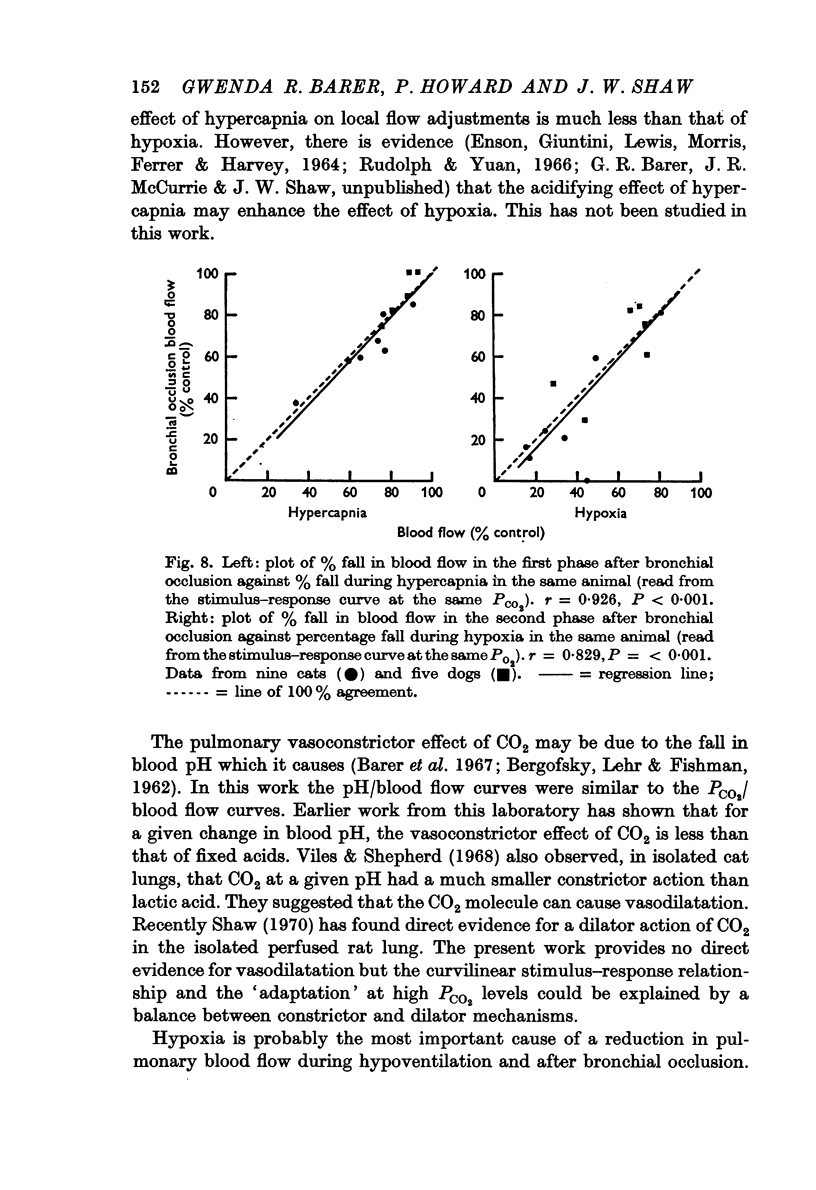
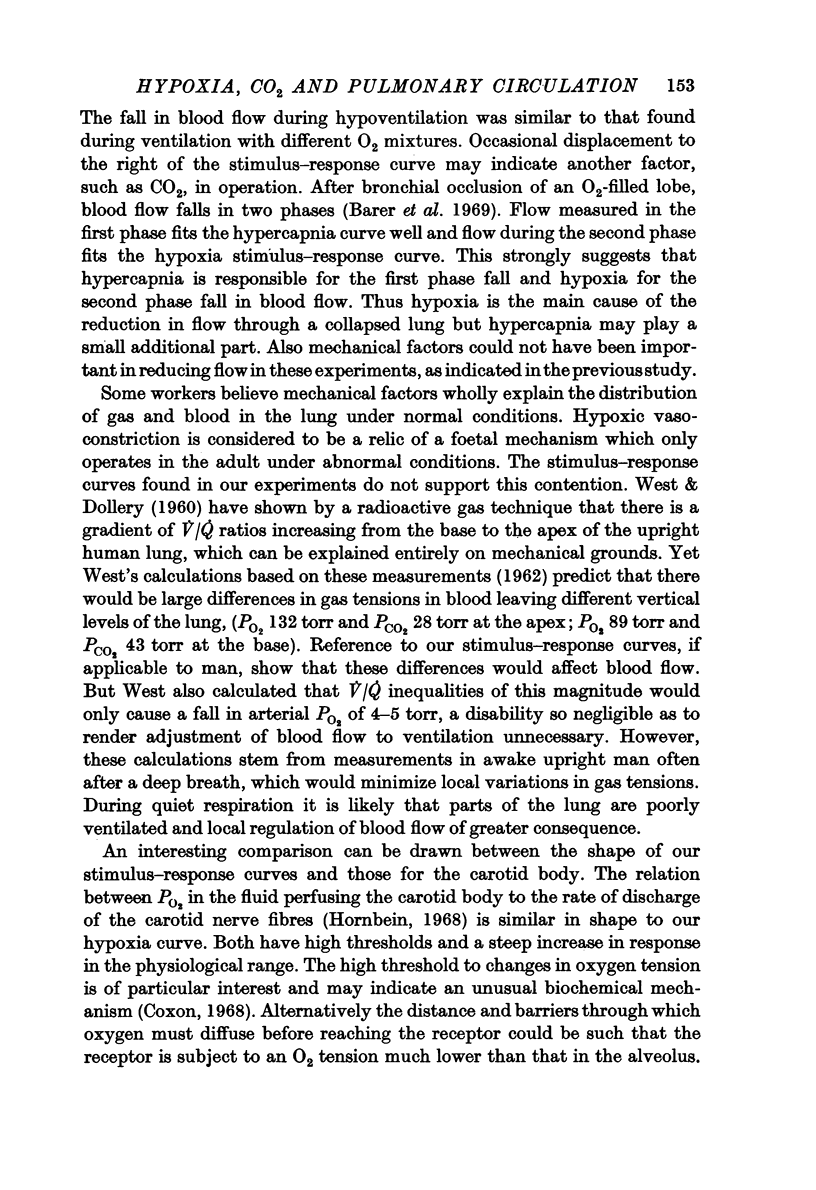
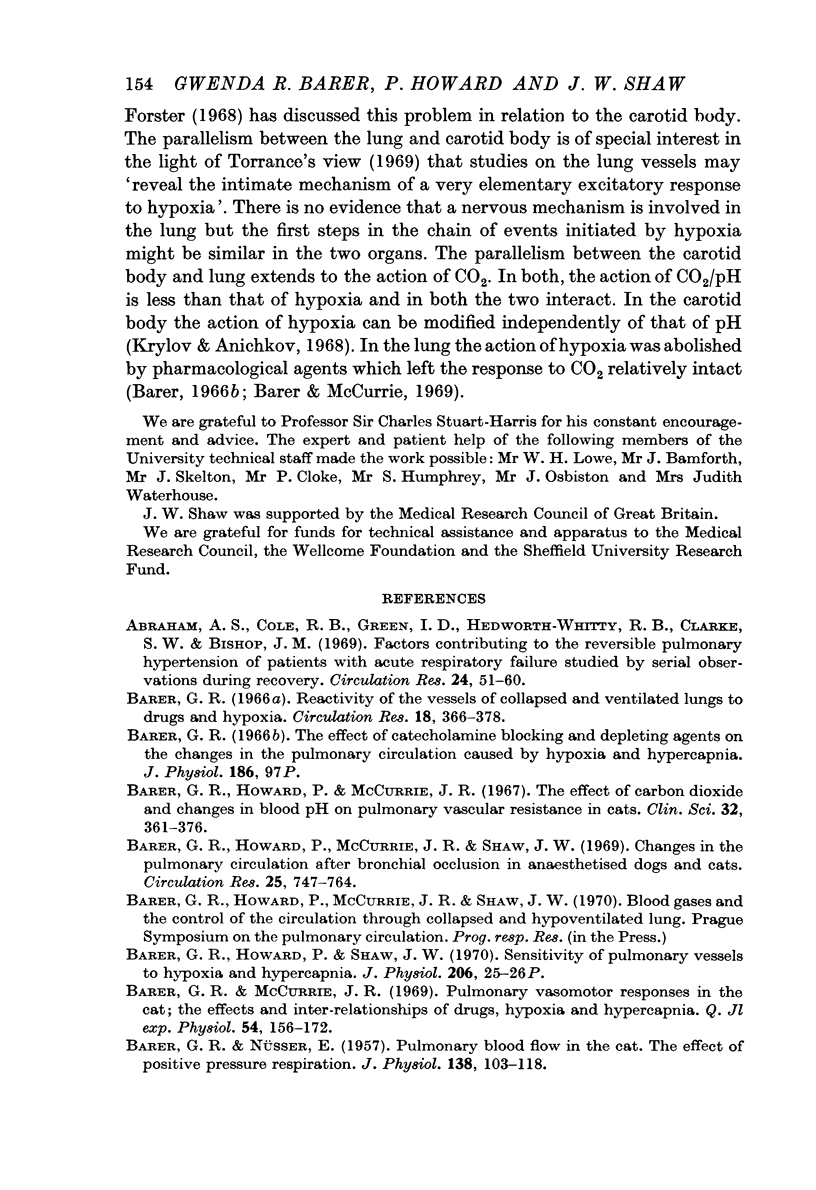
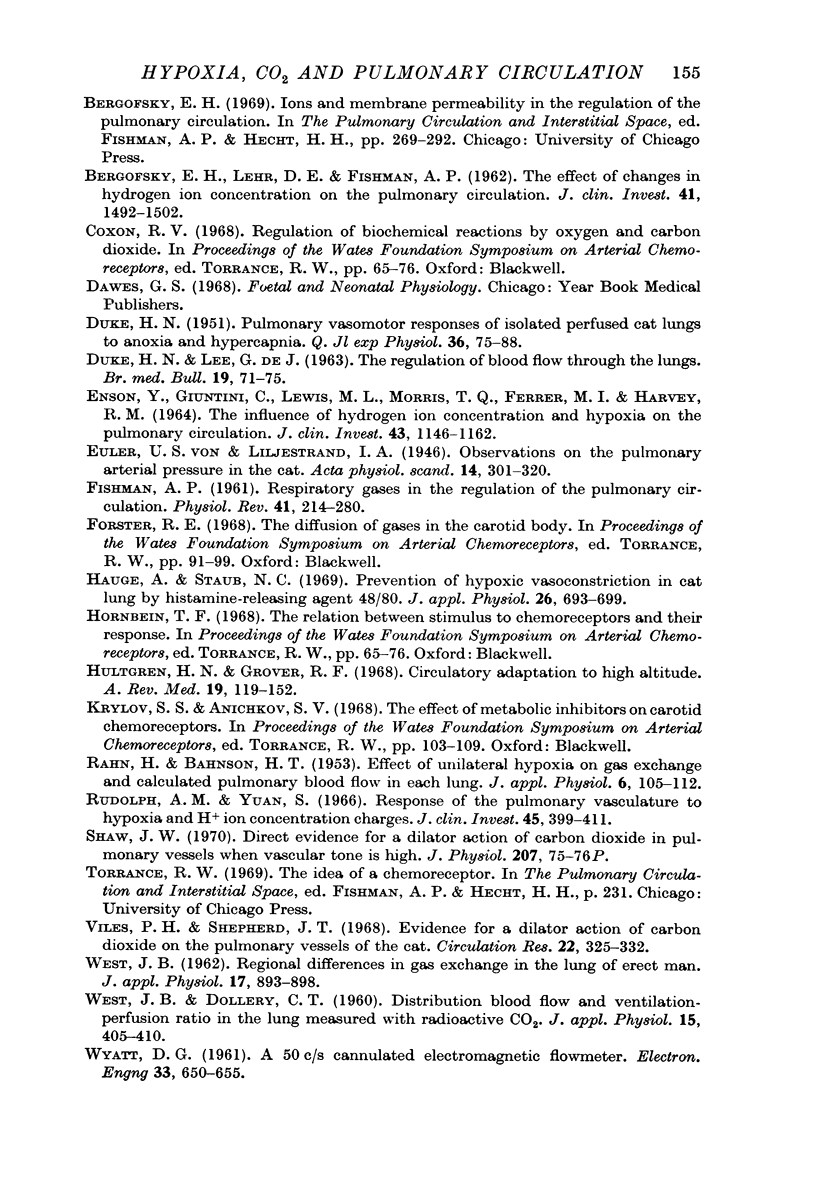
Selected References
These references are in PubMed. This may not be the complete list of references from this article.
- Abraham A. S., Cole R. B., Green I. D., Hedworth-Whitty R. B., Clarke S. W., Bishop J. M. Factors contributing to the reversible pulmonary hypertension of patients with acute respiratory failure studies by serial observations during recovery. Circ Res. 1969 Jan;24(1):51–60. doi: 10.1161/01.res.24.1.51. [DOI] [PubMed] [Google Scholar]
- BARER G. R., NUSSER E. Pulmonary blood flow in the cat; the effect of positive pressure respiration. J Physiol. 1957 Aug 29;138(1):103–118. doi: 10.1113/jphysiol.1957.sp005840. [DOI] [PMC free article] [PubMed] [Google Scholar]
- BERGOFSKY E. H., LEHR D. E., FISHMAN A. P. The effect of changes in hydrogen ion concentration on the pulmonary circulation. J Clin Invest. 1962 Jul;41:1492–1502. doi: 10.1172/JCI104604. [DOI] [PMC free article] [PubMed] [Google Scholar]
- Barer G. R., Howard P., McCurrie J. R., Shaw J. W. Changes in the pulmonary circulation after bronchial occlusion in anesthetized dogs and cats. Circ Res. 1969 Dec;25(6):747–764. doi: 10.1161/01.res.25.6.747. [DOI] [PubMed] [Google Scholar]
- Barer G. R., Howard P., McCurrie J. R. The effect of carbon dioxide and changes in blood pH on pulmonary vascular resistance in cats. Clin Sci. 1967 Jun;32(3):361–376. [PubMed] [Google Scholar]
- Barer G. R., Howard P., Shaw J. W. Sensitivity of pulmonary vessels to hypoxia and hypercapnia. J Physiol. 1970 Feb;206(2):25P–26P. [PubMed] [Google Scholar]
- Barer G. R., McCurrie J. R. Pulmonary vasomotor responses in the cat; the effects and interrelationships of drugs, hypoxia and hypercapnia. Q J Exp Physiol Cogn Med Sci. 1969 Apr;54(2):156–172. doi: 10.1113/expphysiol.1969.sp002014. [DOI] [PubMed] [Google Scholar]
- Barer G. R. Reactivity of the vessels of collapsed and ventilated lungs to drugs and hypoxia. Circ Res. 1966 Apr;18(4):366–378. doi: 10.1161/01.res.18.4.366. [DOI] [PubMed] [Google Scholar]
- Barer G. R. The effect of catecholamine blocking and depleting agents on the changes in the pulmonary circulation caused by hypoxia and hypercapnia. J Physiol. 1966 Oct;186(2):97P–99P. [PubMed] [Google Scholar]
- ENSON Y., GIUNTINI C., LEWIS M. L., MORRIS T. Q., FERRER M. I., HARVEY R. M. THE INFLUENCE OF HYDROGEN ION CONCENTRATION AND HYPOXIA ON THE PULMONARY CIRCULATION. J Clin Invest. 1964 Jun;43:1146–1162. doi: 10.1172/JCI104999. [DOI] [PMC free article] [PubMed] [Google Scholar]
- FISHMAN A. P. Respiratory gases in the regulation of the pulmonary circulation. Physiol Rev. 1961 Jan;41:214–280. doi: 10.1152/physrev.1961.41.1.214. [DOI] [PubMed] [Google Scholar]
- Hauge A., Staub N. C. Prevention of hypoxic vasoconstriction in cat lung by histamine-releasing agent 48/80. J Appl Physiol. 1969 Jun;26(6):693–699. doi: 10.1152/jappl.1969.26.6.693. [DOI] [PubMed] [Google Scholar]
- Hultgren H. N., Grover R. F. Circulatory adaptation to high altitude. Annu Rev Med. 1968;19:119–152. doi: 10.1146/annurev.me.19.020168.001003. [DOI] [PubMed] [Google Scholar]
- RAHN H., BAHNSON H. T. Effect of unilateral hypoxia on gas exchange and calculated pulmonary blood flow in each lung. J Appl Physiol. 1953 Aug;6(2):105–112. doi: 10.1152/jappl.1953.6.2.105. [DOI] [PubMed] [Google Scholar]
- Rudolph A. M., Yuan S. Response of the pulmonary vasculature to hypoxia and H+ ion concentration changes. J Clin Invest. 1966 Mar;45(3):399–411. doi: 10.1172/JCI105355. [DOI] [PMC free article] [PubMed] [Google Scholar]
- Shaw J. W. Direct evidence for a dilator action of carbon dioxide in pulmonary vessels when vascular tone is high. J Physiol. 1970 Apr;207(2):75P–76P. [PubMed] [Google Scholar]
- Viles P. H., Shepherd J. T. Evidence for a dilator action of carbon dioxide on the pulmonary vessels of the cat. Circ Res. 1968 Mar;22(3):325–332. doi: 10.1161/01.res.22.3.325. [DOI] [PubMed] [Google Scholar]
- WEST J. B., DOLLERY C. T. Distribution of blood flow and ventilation-perfusion ratio in the lung, measured with radioactive carbon dioxide. J Appl Physiol. 1960 May;15:405–410. doi: 10.1152/jappl.1960.15.3.405. [DOI] [PubMed] [Google Scholar]
- WEST J. B. Regional differences in gas exchange in the lung of erect man. J Appl Physiol. 1962 Nov;17:893–898. doi: 10.1152/jappl.1962.17.6.893. [DOI] [PubMed] [Google Scholar]


